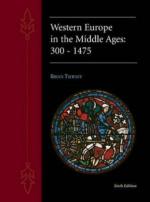|
This section contains 434 words (approx. 2 pages at 300 words per page) |

|
Circa 995-1050
Music Theorist And Teacher
Life and Writings. Guido of Arezzo was probably educated at the monastery of Pomposa near Ferrara, Italy. He entered the Benedictine order there and served as a choral instructor, but his innovative methods of teaching met with hostility from his fellow monks. Guido left Pomposa for a more favorable environment at the cathedral school in Arezzo, where the bishop of the city, Theobald, appointed him choirmaster. Theobald also commissioned him to write his Micrologus de disciplina artis musicae (circa 1025), one of the most important surviving works on music theory in the Middle Ages. At Arezzo, Guido completed an antiphonary (a book of liturgical chant) he had begun in Pomposa, using a new method of notation he had developed. At the request of Pope John XIX, Guido traveled to Rome in about 1028 to explain his new system and display the...
|
This section contains 434 words (approx. 2 pages at 300 words per page) |

|




